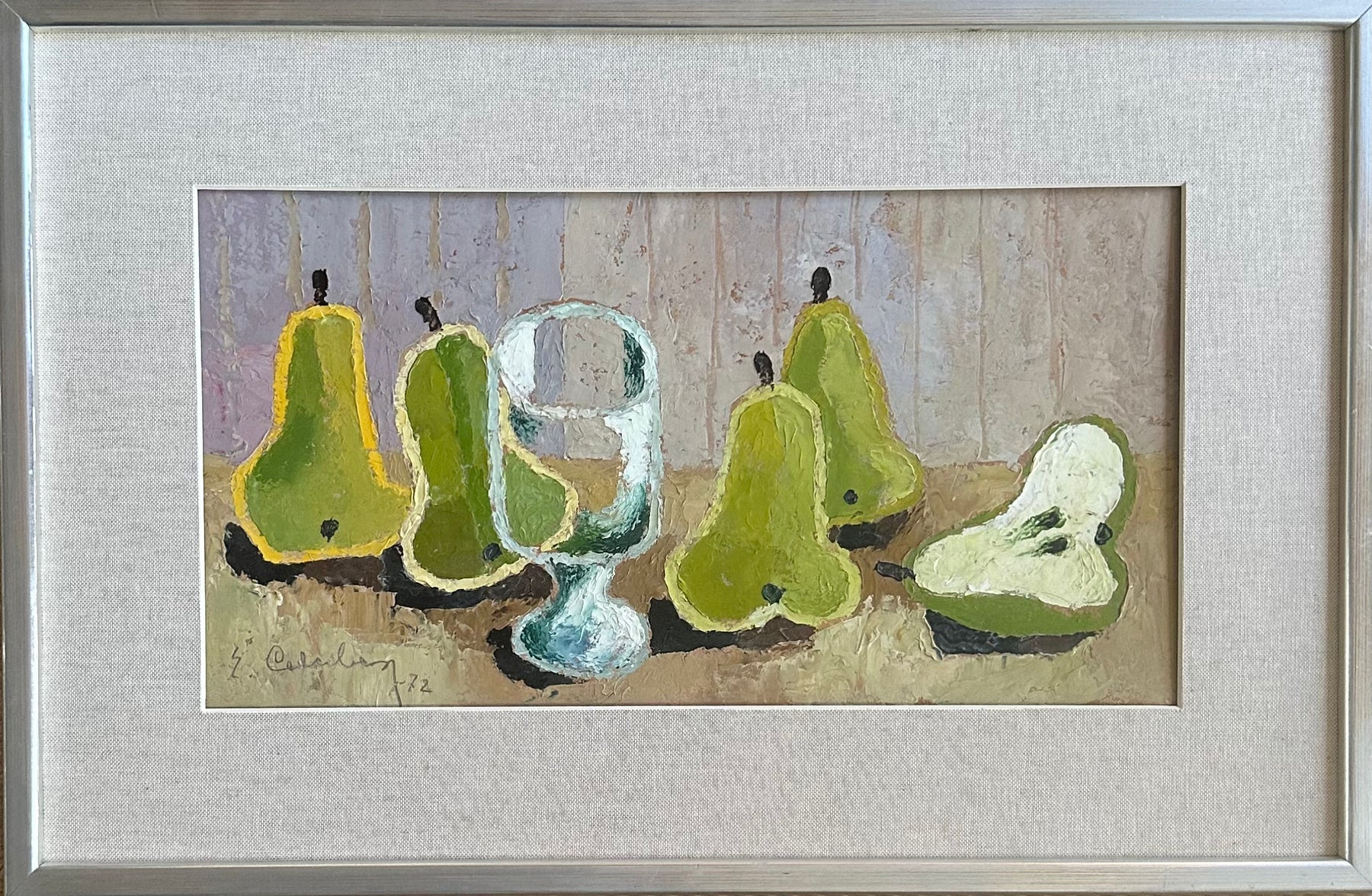All About Mother's Day
With Mother's Day coming up soon on Sunday 10 March, I have been wondering where did the idea come from? Also, why is the celebration of Mother's Day in the UK different to the US? It is a Mother's Day tradition to give bouquets of flowers and to eat Simnel cake to celebrate the special connection between mother and child, as Spring is round the corner. But where did all of this come from?
Here we take a quick look at the origins of this event which dates back to the 16th century and is still celebrated throughout the UK and other parts of the world today.
A 16th Century Tradition
'Blue Eyes' signed A. Kunft (1892-1961), dated 1951, watercolour on paper, available at Collins & Green Art. Click the image for more details.
Mothering Sunday, as it is known in the Christian calendar, was not actually about mothers at all but rather the 'mother church'; the church where one was baptised. The church, in this tradition, is considered a mother which protects all of its believers, known as the children of the church. Mothering Sunday had largely disappeared in Britain until Constance Adelaide Swift, known under her pseudonym Constance Penswick Smith, revived the event in the 1910s. This was echoed in the US by President Woodrow Wilson who proclaimed Mother's Day as a national day of observance in 1914. Thanks to Constance and the American Anna Jarvis, Mother's Day has continued to be celebrated throughout the Western world.
The Mother's Role
'Les Jumeaux' signed Hans Oswald (1919-1983), oil on canvas, available at Collins & Green Art. Click the picture above for more information.
Motherhood has adapted to the changes in family dynamics in our modern era, with family units looking so different to how they did at the beginning of the 20th century, let alone the 16th. Shared parenting roles are expected between mothers and fathers, a far cry from the assumption that women, whether mothers or servants, would solely bring up the children in times gone by. It is also important to note that not all mothers are biological, nor does everyone always have one- sometimes two or none at all. After all, Mother's Day is now seen as a time when the important women in our lives who made us who we are today deserve to be celebrated.
Flowers
'Daffodils' signed Martin Poser (1909-1999), oil on canvas, available at Collins & Green Art. Click the above image for more information.
Daffodils are traditionally given as a gift on Mother's Day to celebrate the beginning of spring, with its longer days and (hopefully!) warmer weather. However, daffodils are not the only flowers given on this important day; Carnations have been labelled as the official flower of Mother's Day, with their usual red and pink petals which represent love, gratitude, and admiration. According to the Leckford Estate, a white carnation in a Mother's Day bouquet can be used as a poignant representation of the mothers who are no longer with us. Other flowers that are important on mothers day include Roses which obviously signify love, as well as Tulips which are also used to celebrate the colourful beginning of spring.
Food
'Pink Ices' from our Stripey Gastronomy Prints collection, available at Collins & Green Art. Click the image for more information.
Many people around the country not only associate Mother's Day with boxes of chocolates, but also Simnel Cake. According to renowned cake expert Mary Berry, this fruit cake was traditionally made by servant girls for their mothers when they returned home from work on Mothering Sunday. The ingredients mainly consist of sultanas, currants, and glacé cherries, which were all used as traditional ingredients to preserve the cake in times without modern fridges and freezers. Other traditional foods for Mother's Day in the UK also includes roast dinners, with the event being observed on a Sunday each year.
Final Thoughts
'Funky Neon Botanical no. 20' bookplate containing carnation flowers, available on Collins & Green Art, click the image for more information.
Mother's Day is steeped in lots of traditions which date back centuries, from the original observation of the day itself through to the cakes we eat and the flowers we buy. Often, we can lose sight of where these rituals originally came from and why they were celebrated, so I hope this article has given you some insights into the day where we give thanks to the women who raised us, and long may it continue into the future.
Written by Eloise Saggers, Collins & Green Art







